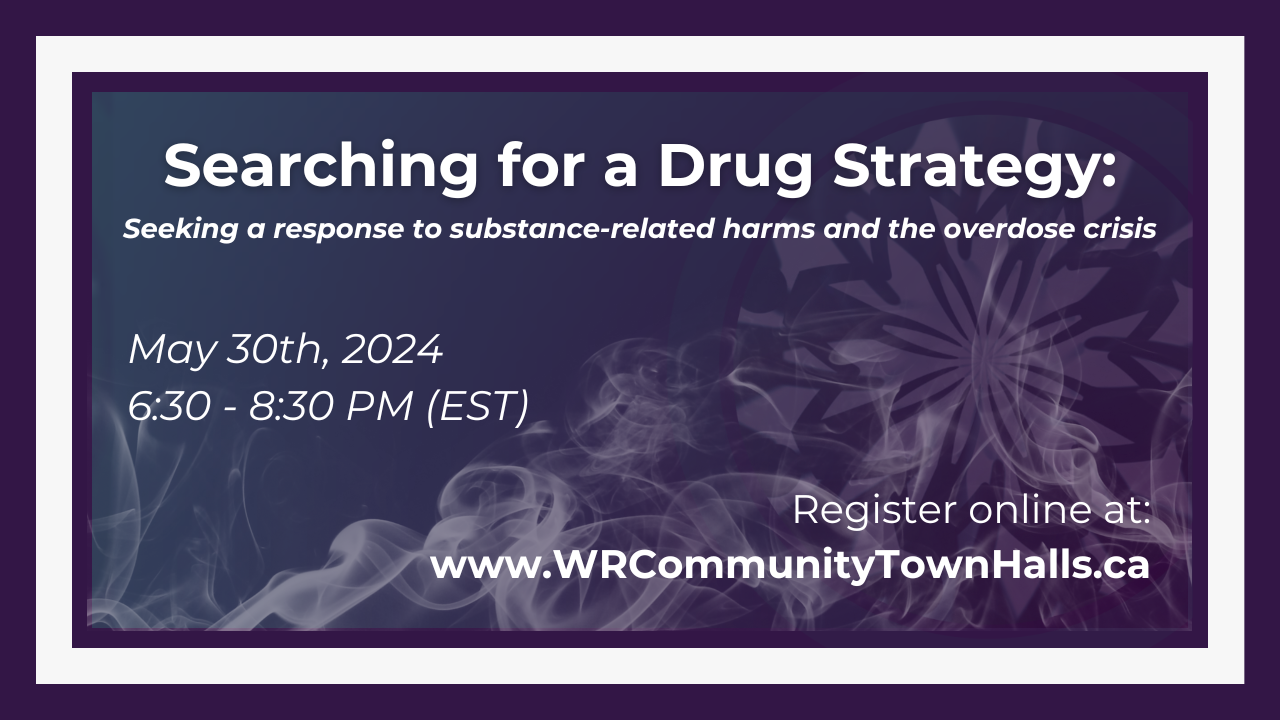Rebecca Penn
Project Manager, National Safer Supply Community of Practice and
Substance Use Health Network, London InterCommunity Health Centre
Substance Use Health Network, London InterCommunity Health Centre
|
Rebecca Penn (she/her) works at the London InterCommunity Health Centre as the project manager for the National Safer Supply Community of Practice and Substance Use Health Network. Rebecca lives in the traditional and ongoing territority of Mi'kmaqi, the land colonially known as Nova Scotia. Rebecca has worked in harm reduction for more than 25 years, wearing different hats (e.g., frontline service provider, researcher, consultant, knowledge mobilizer) and in different contexts (e.g., shelters, mental health and justice, academia, government). From Rebecca’s perspective, accountability and collaboration are key to transforming policies, practices, systems, and institutions to ensure that the world is a better place for people who use drugs and the communities in which they are a part.
For more information about the NSSCoP and SUHN, please see www.substanceusehealth.ca |
|
|
View Presentation Slides
|
On May 30, 2024, a town hall meeting was held to address the escalating opioid crisis and discuss comprehensive strategies involving prevention, treatment, harm reduction, and enforcement. The event featured several distinguished speakers who provided insights based on their expertise and experiences in various aspects of drug policy and public health.
Rebecca Penn focused on safer supply, explaining that the primary issue is the unpredictable and toxic nature of the unregulated drug supply. She highlighted the effectiveness of safer supply programs in reducing deaths and improving quality of life for participants. Penn called for a comprehensive approach that includes harm reduction, treatment, decriminalization, and prevention, along with addressing social determinants of health. This town hall underscored the complexity of the opioid crisis and the necessity of a multifaceted approach involving prevention, harm reduction, treatment, and enforcement. The speakers collectively advocated for evidence-based strategies, comprehensive care, and collaborative efforts to effectively address the crisis and support affected individuals and communities. |
Guest Speakers: |
Safer Alternatives
- Unregulated Drug Supply: The crisis stems from the toxic, unregulated drug supply, not an increase in addiction rates.
- Effectiveness of Safer Supply: Research indicates that safer supply reduces deaths and improves quality of life.
- Comprehensive Approach: Addressing the crisis requires multiple strategies, including harm reduction, treatment, and prevention.
Rebecca Penn discusses the concept of safer supply in drug policy, aiming to clarify common misconceptions and highlight its benefits within a drug strategy framework. She outlines five key points:
Penn emphasizes that the unpredictable nature of the illegal drug supply is the root problem. Pharmaceutical fentanyl, while potent, is safe when regulated. However, street fentanyl is dangerous due to its unknown content and potency. The goal of a safer supply is to offer a safer alternative, reducing the risk of poisoning and death.
She provides an example of a fictional individual, Allison, who benefits from a safer supply program. By stabilizing her drug use with regulated opioids, Allison improves her overall health and life circumstances, accessing various support services and reconnecting with her family.
Penn acknowledges the need for non-medical models of safer supply and regulatory changes to expand access. Diversion of safer supply drugs is a concern, but evidence suggests it occurs within immediate circles rather than the wider public. Policies and protocols are in place to address diversion.
In summary, Penn argues that safer supply programs are a crucial part of a multi-faceted approach to the drug crisis, offering safer alternatives to street drugs, reducing deaths, and improving the quality of life for users.
- Unregulated Drug Supply: The main issue is the unpredictable and toxic nature of the unregulated drug supply. This crisis is often mislabeled as an addiction crisis, but the spike in deaths is due to the toxicity of street drugs, not an increase in addiction rates. Many who die from drug toxicity are recreational or occasional users without substance use disorders.
- Goal of Safer Supply: Safer supply aims to reduce harms associated with the unregulated drug supply by providing pharmaceutical-grade drugs of known potency and content. This approach focuses on harm reduction rather than addiction treatment, ensuring users have a safer alternative to street drugs.
- Evidence of Effectiveness: Research shows that safer supply programs reduce deaths and improve the quality of life for participants. These programs help stabilize drug use, reduce reliance on street drugs, and provide access to additional health and social services.
- Need for Multiple Options: Addressing the drug crisis requires a comprehensive approach, including harm reduction, treatment, decriminalization, and prevention. Safer supply should be one of many tools available, ensuring that different needs are met across various populations.
- Reliable Information Sources: Penn stresses the importance of using evidence-based resources to inform drug policies. She recommends the National Safer Supply Community Practice website for trustworthy information on safer supply protocols, research, and evaluations.
Penn emphasizes that the unpredictable nature of the illegal drug supply is the root problem. Pharmaceutical fentanyl, while potent, is safe when regulated. However, street fentanyl is dangerous due to its unknown content and potency. The goal of a safer supply is to offer a safer alternative, reducing the risk of poisoning and death.
She provides an example of a fictional individual, Allison, who benefits from a safer supply program. By stabilizing her drug use with regulated opioids, Allison improves her overall health and life circumstances, accessing various support services and reconnecting with her family.
Penn acknowledges the need for non-medical models of safer supply and regulatory changes to expand access. Diversion of safer supply drugs is a concern, but evidence suggests it occurs within immediate circles rather than the wider public. Policies and protocols are in place to address diversion.
In summary, Penn argues that safer supply programs are a crucial part of a multi-faceted approach to the drug crisis, offering safer alternatives to street drugs, reducing deaths, and improving the quality of life for users.



